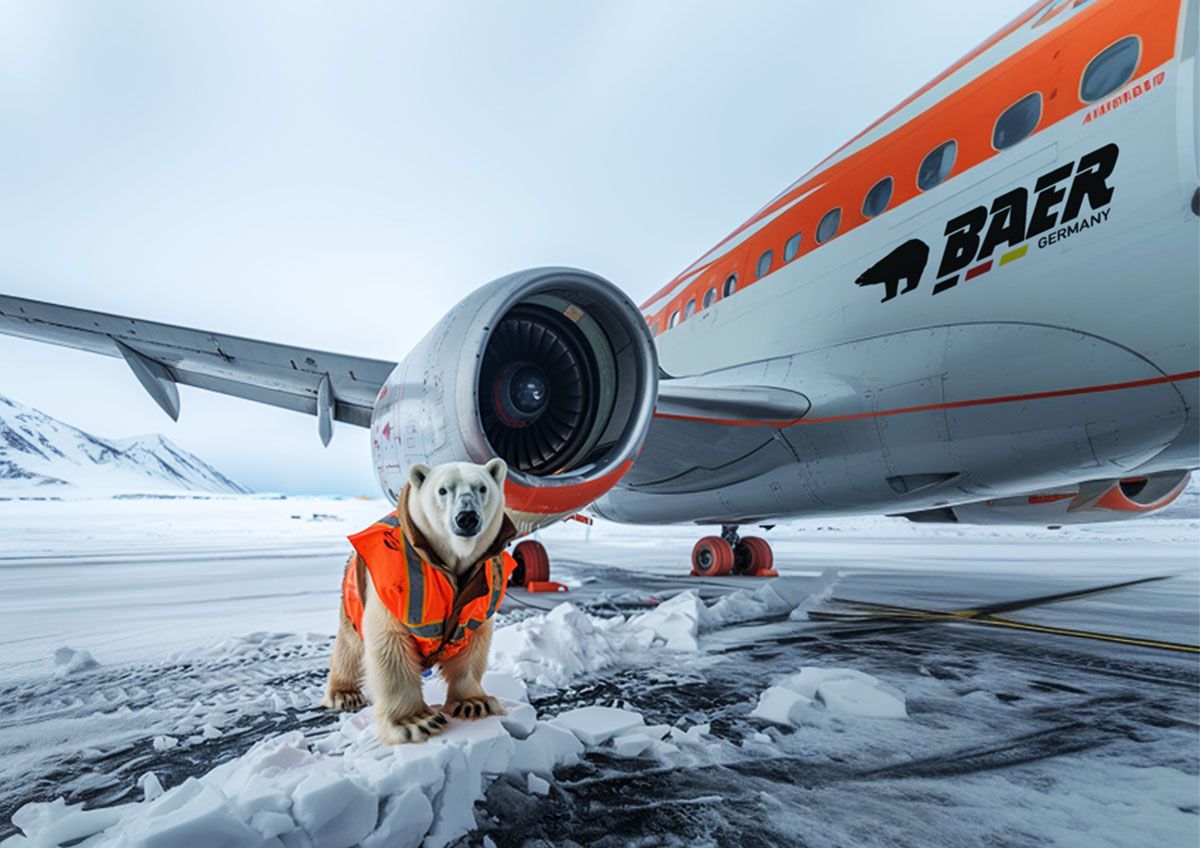
Threading tools in the aerospace industry
Do you ever get cold feet when the airplane suddenly wobbles or vibrates strongly during landing? In the construction of machines, the utmost care is applied, and threading tools ensure in aerospace that the threads are optimally designed for their tasks. In aerospace, threads are indispensable components because they provide a secure hold while allowing components to be easily maintained and replaced. Many screw connections, for example, cannot be replaced simply by bolts or rivets. The certainty that aircraft construction is carried out with the best care may help alleviate the fear of flying.
The stress on screw connections on the landing gear and other highly safety-critical parts during every takeoff and landing is enormous. No wonder special requirements and regulations must be adhered to, ensuring safety in the air and on the ground. Special screw taps and thread cutting dies for aerospace ensure that the threads hold stably and reliably. But what should a thread tap in aerospace be capable of, and what properties should threads on aircraft or spacecraft possess? Take off with us and learn everything you need to know about threads in aerospace!
Threading tools in Aerospace: Confronted with Special Challenges
Where the safety of people is at stake, nothing is left to chance – this also applies to threading tools in aerospace. Essentially, there are two major points to consider with threads on the aircraft:
Threading tools in aerospace must deal with special materials
Even if safety is a priority, it should be balanced with cost-effectiveness where possible. This goal has implications for the materials used in threads for airplanes and spacecraft: they must not only be strong and stable but also as lightweight as possible, as the overall weight of the aircraft is a significant cost factor. Alloys with titanium, aluminum, or exotic materials like beryllium are highly regarded here – these provide the necessary durability but are notoriously difficult to work with. Thread taps in aerospace must also be made of correspondingly resilient materials.
Threads in aerospace must withstand high loads
Threads on airplanes and spacecraft are subject to strict regulations, as they must also withstand high forces. Strong vibrations or oscillating components can put a significant strain on threads in aerospace. Rapid wear is prevented by making specific concessions to the geometry. Accordingly, a threading tool in aerospace must be able to produce such a thread reliably and precisely within tight tolerances.
For Threading Tools in Aerospace, there are Special Thread Standards
To meet the high requirements, some existing thread standards for aerospace have been revised, and others have been newly developed. There are now, among others, standards like MJ, UNJC, UNIF for aviation. Depending on the application, common thread standards can also be used for less safety-critical components.
J-Threads for Aircraft and Spacecraft
The J-series threads are the most well-known threads in aerospace. They are variations of the commonly used metric and inch standard threads M, UNC, and UNF with a 60° flank angle. The changes relate to tolerances and the geometry of the thread profile. In J-threads, the thread tips are rounded, reducing the notching effect – the acting forces are distributed more evenly, preventing crack formation.
The MJ Thread in Aerospace
The metric aerospace thread MJ is standardized according to DIN-ISO 5855. The tolerance, with values of 4H5H for internal threads and 4h6h for external threads, is significantly finer than the M thread, ensuring greater coverage of the thread flanks.
UNJC and UNJF Threads in Aerospace
The inch aerospace threads UNJC and UNJF are variants of the American coarse and fine threads UNC and UNF. They are also more tightly toleranced than their counterparts.
The AERO Thread for Aerospace
The AERO thread is a patented thread for thread inserts in the USA, also used in aerospace. It has a flank angle of 60° and is characterized by the abbreviation AERO.
Other Thread Types are also used in aerospace
Not all threads on airplanes or spacecraft belong to this group of threads specifically designed for aerospace. Where the special properties of the presented thread types are not needed, other thread standards that you may already be familiar with from other areas are used. In addition to the standard variants of J-threads M, UNC, or UNF, for example, British Whitworth threads with a 55° flank angle can be found in aircraft. Also, the Trapezoidal thread Tr according to DIN 105, the Round thread Rd according to DIN 405, or the S Sawtooth thread according to DIN 513, among many others, hold important aircraft parts together and are used as motion threads.
When are Special Threading Tools needed for Aerospace?
The use of special threading tools for aerospace is subject to both legal regulations and agreements between manufacturers of aircraft parts and the contractors. For every conceivable application, it should be clearly regulated whether you need a threading tools for aerospace or not. As with all work on aircraft, guidelines must be strictly adhered to, ensuring the safety of all occupants.
If you are looking for threading tools for aerospace, then visit the BAER Shop! As a screw tap manufacturer, we offer tools for J-threads MJ, UNJC, UNJF, and many other thread types.
